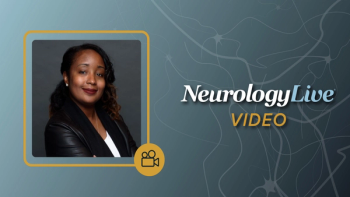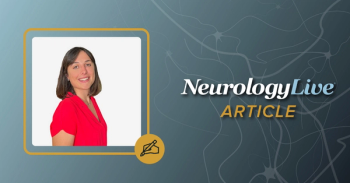
- August 2022
- Volume 5
- Issue 4
Perspectives From the Journey of the Patient With Rare Epilepsy

Joseph E. Sullivan, MD; Kelly Knupp, MD; Mary Anne Meskis; and Tracy Dixon-Salazar, PhD, share insight into the patient and provider journey of LGS and Dravet syndrome, from diagnosis through treatment.
PATIENTS WITH RARE EPILEPSIES such as Dravet syndrome (DS) and Lennox-Gastaut syndrome (LGS) often experience difficulties from the disease that extend beyond the symptoms and biological effects that immediately come to mind. In addition to burdens on quality of life, there can also be delays in diagnosis and difficulties with treatment success.
Currently, DS affects an estimated 1 of every 15,7000 individuals, with approximately 80% to 90% of those having both an SCN1A mutation and a clinical diagnosis of DS.1 LGS, on the other hand, is estimated to occur in roughly 0.1 to 0.28 of every 1000,000 individuals, accounting for roughly 1% to 4% of all childhood epilepsy cases.2 Although these epilepsy disorders are rare, therapies are available to treat them, but many patients experience refractory disease, making the development of a treatment regimen a complex process. As the medical field moves toward more personalized and holistic care as a whole, the treatment process involves a much more in-depth conversation about the patient experience.
In a recent NeurologyLive® Cure Connections® series, a panel of experts in epilepsy care and advocacy came together to discuss how this landscape has shifted and to share their understanding of that patient experience from various angles. Moderated by JOSEPH E. SULLIVAN, MD, a professor of neurology at UCSF Weill Institute for Neurosciences, the conversation touched on a number of facets of the care paradigm.
Syndrome Overview
Dravet Syndrome
Panel member KELLY KNUPP, MD, a pediatric neurologist at Children’s Hospital Colorado, began the discussion with an overview of DS, noting that the developmental epileptic encephalopathy is often characterized by multiple seizure types provoked by temperature changes, as well as intellectual impairment. Notably, Knupp said, this impairment can become more apparent with age—a key change to look for diagnostically. DS can also be accompanied by progressive gait disorder and behavioral disorders, among other comorbidities.
“One of the characteristics of this syndrome is that it’s often associated with a pathogenic variant in a gene called SCN1A,” Knupp explained. “The vast majority of children do have one of those genetic diagnoses, but not all children. That’s important to keep in mind, as well [as the fact] that there’s a clinical syndrome, but we may not find a genetic mutation that goes along with it. It is also important to know that there are some children who have a pathogenic variant in SCN1A who don’t actually have Dravet syndrome. It’s important to look for both of those things: the clinical syndrome as well as the gene mutation.”
DS was initially believed to be more uncommon than it is, and recent epidemiological data suggest that missed diagnoses were prevalent in clinical practice prior to current advances in genetic testing. This was driven largely by a lack of understanding of DS itself, and Sullivan explained that during his training, he saw very few children with a diagnosis of DS. “It’s almost embarrassing, but you can see how it happens. We are told as pediatricians that febrile seizures are common and many of these kids are told not to worry about it.”
Knupp explained that in her practice, any child who has had a prolonged febrile seizure, particularly hemiconvulsive seizure, raises a flag. “I’m on the fence about the children who have had 2 simple febrile seizures and otherwise are doing well because we know that about one-third of children who have a first febrile seizure will go on to have a second febrile seizure. But, if there’s something like a prolonged seizure or a focal nature to the seizure, we have to consider doing genetic testing,” she said.
Sullivan added, “Age is a factor, too. We’re told that febrile seizures occur at 6 months; if a patient has a simple febrile seizure at 6 months and then another simple febrile seizure at 7 months, that’s a worry to me.”
Lennox-Gastaut Syndrome
In LGS, the diagnostic process is similarly challenging for a variety of reasons, though much of it is driven by controversy surrounding the clinical definition of the syndrome. Although criteria do exist to make the diagnosis, Knupp explained that LGS has numerous etiologies and often evolves from another status, making it challenging to catch and properly diagnose.
“To have a diagnosis of Lennox-Gastaut most people would agree that you should have multiple seizure types, maybe just 2, but at least 1 of those should be tonic seizures. There are characteristic EEG [electroencephalogram] patterns that should be seen with slow spike and wave and then also paroxysmal fast activity which is most often seen during sleep,” she said.
Additionally, children with LGS have, almost universally, intellectual impairment, Knupp continued. This is often considered a requirement for the diagnosis and can be accompanied by a time point for presentation—sometimes prior to the age of 11 years. However, she said, there are reports of individuals who presented during adolescence or in early adulthood with these signs and symptoms.
“Because this is a syndrome that most children evolve into, what’s important is that when our families are starting to develop multiple seizure types, we do take another look and repeat their EEG [electroencephalography] and look for the electrographic findings of this,” Knupp said. “There are certain patient populations that we should probably always be very sensitive to and probably be looking for evolution into the syndrome. There are definitely some high-risk patients that we should be looking for this diagnosis in, but we also have to keep in mind that’s not all of them, and this can happen to any one of our children who presents with childhood epilepsy. We always have to be aware of that and making sure that we are clarifying what seizure types are [being seen], what’s happening at night, and thinking about getting an EEG particularly in a child who is having multiple seizure types and has developed mental delay or intellectual impairment.”
Knupp and Sullivan detailed the list of genetic disorders that are frequently associated with LGS, noting that infantile spasms have one of the highest risks of evolving into LGS, especially in patients with refractory spasms. But those with an epilepsy risk factor, such as neonatal stroke or developmental brain abnormality, are an important secondary group to evaluate as well.
“You don’t necessarily present with Lennox-Gastaut; you present with a few seizures and then it takes some time for the syndrome to evolve and declare itself,” Sullivan said. “It’s our job as epilepsy providers to be aware of that evolution, not only EEG-wise—we don’t look at any of these things in isolation—but how the whole picture fits together. Then there is a third group where there are no epilepsy risk factors, and maybe even normal development, but they have their first few seizures and then very quickly evolve into the Lennox-Gastaut picture. You can always get even more narrow and say specific genetic diagnosis.”
We still have to work to educate our adult providers about the importance of getting a diagnosis and making sure that they know this testing is available and is significantly less costly than it was in the past.
– MARY ANNE MESKIS
Patient Journey to Diagnosis
Dravet Syndrome
DS often presents during the first year of life, usually beginning with prolonged generalized tonic-clonic or hemiclonic seizures. Status epilepticus is also common among this population in the early stage of disease, and a variety of other seizures can occur prior to age 5 years. The disease itself is also often associated with hyperthermia, with the initial seizure often occurring alongside fever.
Recent advances in genetic testing have aided the diagnostic process, though many older patients previously experienced delays of several years prior to receiving an official diagnosis of DS. For one panel member, MARY ANNE MESKIS, executive director of the Dravet Syndrome Foundation, whose son is a patient with DS, the diagnostic delay was familiar.
“I think certainly in the last decade, we’ve really seen a change in the typical journey for patients and parents to get to diagnosis. Back then, my son, who is now 22, [did not receive a diagnosis] until age 4,” Meskis told the panel. “Early on, we kept being told that it was febrile seizures. Unfortunately, we still have some patients that follow that same diagnostic journey; if they’re not being seen by a health care professional that understands what they should be looking for and [one who] doesn’t order genetic testing, unfortunately it can still take several years until symptoms progress and until they find the right specialists that can help them get to diagnosis.”
For the physicians, though, the diagnosis can still be made without genetic testing. For experts in this realm of care, the key characteristics can be clear when a patient experiences an evolution from prolonged febrile seizures into multiple seizure types and temperature sensitivity. Additionally, in older patients, gait challenges can sometimes lead clinicians to the correct diagnosis. But as DS presents so early on, that time to see the evolution of seizures can be critical, and Sullivan noted that sometimes signs can be missed initially.
“The area where genetic testing has been really helpful has been with those very early seizures,” Knupp said. “It sometimes is challenging to tell the difference between a straightforward febrile seizure vs a febrile seizure associated with Dravet syndrome, particularly if it was not a hemiconvulsive seizure. But if I saw a patient whose first febrile seizure was a hemiconvulsive seizure on the right and their second febrile seizure was a hemiconvulsive seizure on the left, I would have felt really confident that it was Dravet syndrome, and that we should proceed as though that was the diagnosis.”
Sullivan added that without a proper childhood history of seizure evolution, oftentimes DS can be difficult to identify. Meskis echoed this sentiment, adding that as patients get older, unless the parent or guardian pushes for more answers, it can be particularly challenging to press for further inquiry into diagnosis, especially if the patient has improved otherwise.
“I have also heard from parents who kept pushing for testing, and after finally getting testing and a diagnosis, they might have had a child on a medication that was contraindicated for Dravet syndrome for many years,” Meskis said. “I think there’s a challenge and I think that we still have to work to educate our adult providers about the importance of getting a diagnosis and making sure that they know this testing is available and is significantly less costly than it was in the past, because that was a barrier for a long time for our families.”
Sullivan agreed, adding that the diagnosis also allows patients and families to experience a sense of community. Organizations such as the Dravet Syndrome Foundation and support groups provide a resource for these individuals living with similar day-to-day struggles. “I’ve just seen so much value in that,” he said.
Lennox-Gastaut Syndrome
In LGS, although the disease similarly presents early on in life, the situation can be less clear than with DS. This is mainly a result of the aforementioned lack of consensus about the clinical definition of LGS and the variety of underlying causes. Often, its cause goes completely unknown. For many, such as panelist TRACY DIXON-SALAZAR, PHD, executive director of the Lennox-Gastaut Syndrome Foundation, and whose daughter is a patient with LGS, the journey to diagnosis can take some time and can be characterized by numerous failed attempts at treatment.
This lag in diagnosis can lead to confusion for the parents and patients. Patients continue to experience seizures unexpectedly and without a discernable pattern, and all the while experiencing the consequences of these convulsive episodes without help from treatment. Over the past decade, though, the literature and understanding of LGS has improved drastically, which, in turn, has improved the diagnostic process for many. Cognitive changes in the setting of ongoing seizures, Knupp explained, are an immediate red flag to look into the possibility of LGS. Additionally, when it comes to disease management, a conversation about pairing nonpharmacologic interventions such as diet or stimulation devices can also provide some relief to patients.
“We are seeing a lot of families in our group that are coming in [for diagnosis at a] much younger [age]—1- or 1.5-year-olds, 2-year-olds that are getting in a lot earlier,” Dixon-Salazar said. “Our understanding is that there is this evolution and…that it is not the doctors who are failing you, it is the treatments. Science and medicine have not got to the point where they can help in a lot of ways, but you don’t want to stop trying. Families are supported now by other caregivers who have been there, done that, so I definitely think [the diagnostic journey] is faster and better.”
Dixon-Salazar added that part of the difficulty in the diagnostic process is that many patients with LGS are being treated in general neurology or family medicine practices, which may be unfamiliar with the rare epilepsy, marking the importance of getting referrals to epileptologists, such as Knupp or Sullivan. From there, Dixon- Salazar said, patients and their families can more easily find hope for their future care.
“That first visit is often trying to provide some education, understand what’s going on so far, and set reasonable expectations, which is part of our job to be able to move forward,” Knupp explained. “That first visit is usually assessing how many medications have been tried and having that conversation that if you have failed 2 or more medications, the likelihood of more medicine making you seizure free is pretty low.”
“The truth is, up until 2000, that wasn’t our expectation. We thought, we will just keep trying medications and we will eventually find something that works for you, and that has changed our conversation. It’s hard for families to hear that, but it sets the framework for us to do reasonable goal-setting so that we can say, ‘You’ve reached the point where it’s unlikely a medicine will make you seizure free.’ It doesn’t mean that we are not going to try, and we have lots of options to look at to get there, but let’s talk about reasonable goals for the next couple of months. Maybe that’s finding a good balance between medications and adverse effects rather than pushing medicines that make somebody so sedated that their quality of life is poor,” Knupp said.
REFERENCES
1. Wu YW, Sullivan J, McDaniel SS, et al. Incidence of Dravet syndrome in a US population. Pediatrics. 2015;136(5):e1310-e1315. doi:10.1542/peds.2015-1807
2. Markand ON. Lennox-Gastaut syndrome (childhood epileptic encephalopathy). J Clin Neurophysiol. 2003;20(6):426-441.doi:10.1097/00004691-200311000-00005
Articles in this issue
Newsletter
Keep your finger on the pulse of neurology—subscribe to NeurologyLive for expert interviews, new data, and breakthrough treatment updates.




























